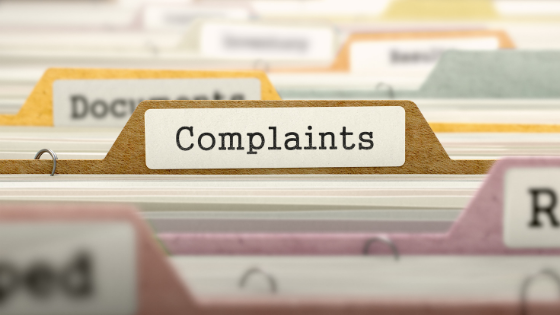You do everything you can to ensure the health and safety of your workers. But sometimes, it’s not enough.
While any of a number of agencies could knock on your door for an investigation, OSHA is unique. When OSHA comes knocking, it’s incumbent on the employer to find out why they’re knocking and resolve the issue as quickly as possible.
If you get an OSHA complaint and are facing an inspection, here’s what you need to do.
When an OSHA Complaint Is Received
In order to understand how to proceed, you have to understand what happens when OSHA receives a complaint.
OSHA evaluates every individual complaint to determine how best to handle it. However, they also have to consider the caseload of their local offices and the number of inspections that need to be completed.
To reduce the caseloads of local offices, OSHA will typically evaluate each complaint as it arrives to assess the level of risk to employees. If the complaint is determined to be low-risk, the local office calls the employer to notify them of the complaint and follows up with a letter requesting a response in 10 days. Employers must respond promptly and thoroughly, giving evidence of compliance including photos, invoices for safety equipment, or proof of safety training.
Your response, in this case, will close phone and fax cases.
If you don’t respond, OSHA makes the consequences clear, “If we do not receive a response from you by (due date), indicating what appropriate action has been taken or that no hazard exists and why, an OSHA inspection will be conducted.”
If an Inspector Knocks
Sometimes, though, OSHA doesn’t settle for a phone call and a letter. If the complaint is deemed serious enough, OSHA may send an inspector to the site in person.
The OSHA Field Inspection Reference Manual (FIRM) outlines the inspection duties of OSHA inspectors and compliance officers. It also gives employers a handy insight into what will happen during an inspection.
Compliance officers will conduct an “opening conference”. During this conference, they will show their credentials and explain what will happen during the inspection.
Plan Ahead
If you know the inspection is coming, you have time to plan ahead. Take advantage of it.
If you can, try to restrict admittance until management is on-site. An opening conference or inspection should never commence without the appropriate management personnel present.
The best way to do this is to set up a procedure with security and receptionists for what to do if a compliance officer or inspector comes. You should also determine the reason for the inspection. You can usually obtain a copy of the employee complaint from the compliance officer. The employee’s name will be left out of the complaint.
Do not comment on the reason for the complaint, the circumstances under which it was made, or who may have made the complaint. Employees who register complaints are protected from retaliation and discrimination under the OSH Act.
State the Facts
Whether you get a phone call or an in-person inspection, you need to have your response prepared.
Do not panic. The best way to minimize panic is to have a plan in place in the event that a complaint is made against you. If you’re not sure how to respond, keep the following in mind:
- Listen (don’t ask questions)
- Do not admit anything related to the allegations (don’t ask questions)
- Do not refute anything related to the allegations (don’t ask questions)
- Do not explain anything related to the allegations (don’t ask questions)
- Do not question anything related to the allegations
- Express genuine concern over the allegations
In case you missed it, the cardinal rule is simple: do not ask any questions.
If you ask questions, you’ll be tempted to get defensive or explain away the issue. Asking questions is a guaranteed way to dig yourself into a hole.
Listen to what the inspector has to say, express genuine concern, then get into action to address the issues elaborated in the complaint.
Helping You Avoid OSHA Complaints
An OSHA complaint is by no means a death knell for your workplace. Quite the opposite, in fact. The whole goal is to make your workplace safer.
That said, everyone would be happier if you could avoid an OSHA complaint in the first place. If you need help making your workplace safer, we can help. See how EHS Insight's OSHA reporting software can help keep your organization safe and compliant.
